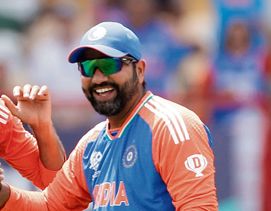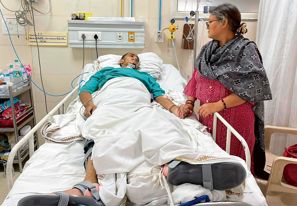Mohandas Karamchand Gandhi: I am an Ordinary Man: India’s Struggle for Freedom (1914-1948) by Gopalkrishna Gandhi. Aleph. Pages 443. Rs 999
Book Title: Mohandas Karamchand Gandhi: I am an Ordinary Man: India’s Struggle for Freedom (1914-1948)
Author: Gopalkrishna Gandhi
Ashutosh Kumar
THIS volume is third in the series on Mahatma Gandhi that began with ‘Restless as Mercury: My Life as a Young Man’. The earlier volumes, also edited by his grandson Gopalkrishna Gandhi, covered his younger years as well as the time spent as a lawyer in South Africa. The present volume covers the later phase of his life (1914-1948), when rechristened as Mahatma, Mohandas Karamchand Gandhi led the nationalist movement. It presents in his own words the story of those eventful 34 years that were also momentous for the independence of the country.
The book is divided into four segments. The first refers to the initial five years after his return. He travelled through India on the advice of Gopal Krishna Gokhale to ‘know’ his motherland and launched his first set of satyagrahas in India — with the indigo growers of north Bihar, followed by the industrial mill workers in Ahmedabad.
The second segment (1920-29) covers the post-Gokhale and post-Tilak India. The Gandhi-led Congress launched the Non-cooperation Movement, based on the cardinal principles of satya and ahimsa.
This period saw Gandhi becoming a charismatic saintly leader and turning Congress from a pressure group to a mass party fighting for swarajya. It concurrently took up social issues of untouchability, empowerment of women and Hindu-Muslim unity. This period witnessed protests against Simon Commission and the subsequent atrocities by the colonial regime against the protesters. These galvanised the masses and impelled Gandhi to finally endorse Congress’ ‘Poorna Swaraj’ resolution.
In the third segment (1930-39), Gandhi embarked on the Dandi March from Sabarmati Ashram to protest against the salt tax. He launched the all-India Harijan tour to promote abolition of untouchability and collect funds for upliftment of the marginalised community. He also launched ‘Harijan’ in English, with Hindi and Gujarati versions. Incidentally, right from the beginning of his India stint, Gandhi stood for the promotion of Hindi as a national language, even asking Tilak to speak in Hindi in a public meeting. At the same time, he also stood for other Indian languages. When his youngest son married a Tamil girl, he spoke in Hindi to the bride and in Gujarati to his son.
The fourth segment (1940-48) encapsulates the most volatile period in colonial India. While it was a time when World War II had turned the world, including India, topsy-turvy, the spectre of Partition loomed on the horizon. During this period, Gandhi also lost his lifelong companion, Kasturba Gandhi, and long-term secretary Mahadev Desai. What hurt him the most, however, was the raging communal violence and strife that engulfed the country following the call of Direct Action Day by the Muslim League.
This period saw Gandhi at his combative best, giving a call for Quit India Movement, resolutely standing against the murderous masses, advocating peace, fraternity and non-violence. Partition happened and was followed by a bloodbath. He continued his crusade against communal hatred and violence, travelling through the disturbed areas until his ultimate sacrifice for the cause.
Reading the narrative of 34 years of Mahatma Gandhi’s later life in his own words, carefully compiled from ‘The Story of My Experiments with Truth’, his numerous letters, and his utterances faithfully recorded by associates and biographers, is most helpful in understanding the human being that he was. Copious notes and footnotes added to the text by Gopalkrishna Gandhi enrich the scholarly selection. These notes, in a way, ‘complete’ the text, filling the gaps. They enable readers to know much more about the individuals and events that find mention in the text.
However, Mahatma Gandhi’s human frailties do come about. He himself concedes unfair treatment meted out by him to his devoted wife sometimes. There is also an abiding sense of regret about his estranged son Manilal. He is harsh on his family members in the sense that they have to abide by his principles and way of life, though he also lets them make their own decisions.
Since it is an account of his life in a diary mode, one comes across details about the frequent bouts of pain and illnesses that his frail body suffered due to the hardships he inflicted upon himself. Gandhi often said his life was his message. This comes out clearly in the text: be it living the life of austerity and strict discipline, holding utmost belief in truth and non-violence, refusal to practice untouchability, glorifying manual labour, being conscious of the value of time, disapproval of maltreatment of women and advocacy of communal peace and harmony.
Finally, what strikes the reader is a certain degree of coldness, the matter-of-fact way in which the prose is drafted. One comes to know a lot about the principles and goals Gandhi stood for in his public and personal life. However, there is not much insight into the family man that he was and his softer persona. But then, Gandhi was not an ordinary person. He belonged to the nation.














